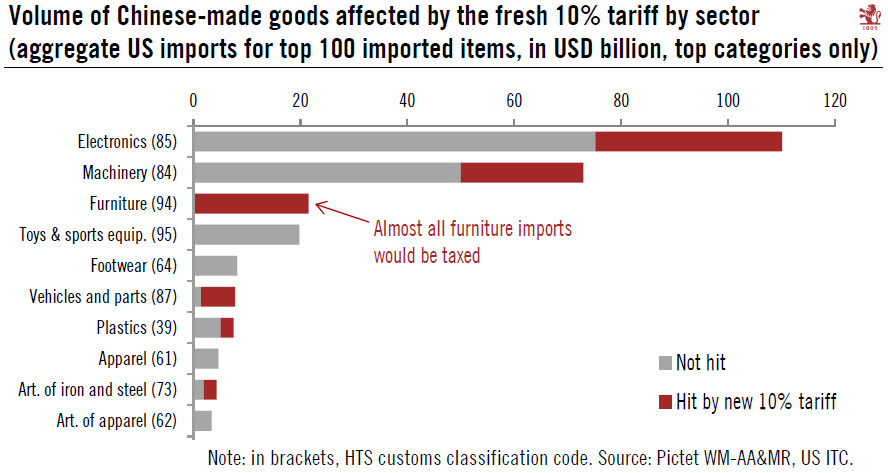Latest Trump tariffs move beyond Chinese tech imports.This week, the Trump administration announced it would slap a 10% tariff on USD200 billion of imports from China, on top of the USD50 billion already announced. After a consultation period, the tariffs could come into force as soon as September (see our Flash Note ‘US-China trade update’, 11 July 2018). The US imported USD506 billion of merchandise from China in 2017.Officially, the new set of tariffs are a response to China’s counter-measures against the first wave of US tariffs as well as to China’s “failure to change its practices”. Indeed, the US is seeking the “elimination of China’s harmful industrial policies”, which include “forced technology transfer practices”.While the first wave of tariffs that kicked in in early July
Topics:
Thomas Costerg considers the following as important: Macroview
This could be interesting, too:
Cesar Perez Ruiz writes Weekly View – Big Splits
Cesar Perez Ruiz writes Weekly View – Central Bank Halloween
Cesar Perez Ruiz writes Weekly View – Widening bottlenecks
Cesar Perez Ruiz writes Weekly View – Debt ceiling deadline postponed
Latest Trump tariffs move beyond Chinese tech imports.
This week, the Trump administration announced it would slap a 10% tariff on USD200 billion of imports from China, on top of the USD50 billion already announced. After a consultation period, the tariffs could come into force as soon as September (see our Flash Note ‘US-China trade update’, 11 July 2018). The US imported USD506 billion of merchandise from China in 2017.
Officially, the new set of tariffs are a response to China’s counter-measures against the first wave of US tariffs as well as to China’s “failure to change its practices”. Indeed, the US is seeking the “elimination of China’s harmful industrial policies”, which include “forced technology transfer practices”.
While the first wave of tariffs that kicked in in early July (covering USD50 billion of Chinese imports) officially targetted Chinese industrial policy but aimed to minimise the harm to the US consumer, the Trump administration is casting the tariff net much wider this time around, with goods of prime importance for the US consumer now being threatened. In other words, the new wave of tariffs go well beyond Chinese-made technological goods.
The net aims to capture almost all Chinese furniture imports, for instance. By contrast, Chinese clothing imports would be mostly sparred. So would Christmas decorations (USD1.5 billion of imports in 2017).
Chinese imports of cell phones and tablets/laptops, which come to USD82 billion, are not on the list of imports covered by the new tariffs – but other consumer electronics, such as routers and printed circuit boards, are. Overall the new tariff on Chinese imports look like a 10% tax on US consumers, particularly on buyers of ‘made in China’ furniture.

